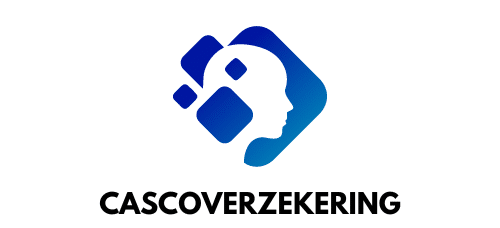How to Optimize the Work Environment for Employees with Seasonal Affective Disorder (SAD)?

As the calendar flips towards the colder and darker months of the year, it isn’t just the weather that undergoes a significant transformation. For many individuals, the shift in seasons can trigger a type of depression known as Seasonal Affective Disorder (SAD).
In the context of a work environment, it is crucial for employers to recognize and adapt to the needs of those employees battling with SAD. By taking proactive measures to optimize the work environment, employers can ensure that their workforce remains productive and engaged throughout the year.
In the same genre : What Is the Role of Occupational Therapy in Managing Work-Related Repetitive Strain Injuries?
In this article, we will explore some strategies for enhancing the work environment in ways that are sensitive to the needs of employees with Seasonal Affective Disorder.
Recognizing The Symptoms of Seasonal Affective Disorder
Before delving into the strategies, it is of utmost importance to understand the signs and symptoms of Seasonal Affective Disorder. This understanding enables employers to identify potential cases and take appropriate action in a timely manner.
Also to see : What Are the Long-Term Effects of Blue Light Exposure from Screens on Ocular Health?
Seasonal Affective Disorder manifests in several ways that can impact an individual’s work performance. Symptoms may include low energy, difficulty concentrating, fatigue, and a change in appetite or weight. Employees may also experience social withdrawal, preferring to work alone and avoiding office activities or gatherings.
These symptoms typically present themselves during the late fall and winter months, often improving with the arrival of spring. However, there is a less common form of SAD, often termed "summer depression," where symptoms appear during the late spring and early summer.
Implement Flexible Work Schedules
One of the simplest yet most effective strategies for supporting employees with SAD is by introducing flexible work schedules.
Given that a decrease in sunlight during the day can exacerbate symptoms of SAD, allowing employees to start and finish work earlier in the day can be beneficial. This would provide them more access to natural sunlight and therefore, potentially alleviate some of their symptoms.
Another aspect of flexible work schedules that can prove to be a supportive measure is allowing employees to take periodic breaks throughout the day. These short rest periods can be used to step outside, enjoy the sunlight, or even engage in a physical activity – all of which can help mitigate the symptoms of SAD.
Create a Sunlit and Vibrant Work Environment
Considering the significant impact of sunlight exposure on Seasonal Affective Disorder, it is logical to take steps towards maximizing the amount of natural light in the workplace.
It can be as simple as rearranging the office layout to allow more sunlight to filter in, or installing large windows and skylights. If possible, consider an outdoor workspace for those who prefer to work under the open sky.
Additionally, enhancing the work environment with bright, warm colors can emulate the vibrancy of the sunny seasons and offset the gloominess of the darker months. This could be achieved by incorporating colorful artwork, furniture, or even indoor plants to create an uplifting and energizing atmosphere.
Offer Mental Health Support
Proactive mental health support is crucial in managing Seasonal Affective Disorder in the workplace.
Employers should foster an open and supportive culture that encourages employees to discuss their mental health without fear of stigma or discrimination. Regular check-ins with employees, especially those diagnosed with SAD, can help employers stay updated about their well-being and provide the necessary support as needed.
Companies could also consider bringing in mental health professionals to conduct workshops and sessions. These sessions could focus on how employees can manage SAD, including guidance on light therapy, cognitive-behavioral therapy, and medication, if necessary.
Encourage Physical Activity
Physical activity has been consistently linked with improved mood and reduced depressive symptoms. Therefore, encouraging employees to engage in regular exercise can be an effective strategy to manage Seasonal Affective Disorder.
One way to promote physical activity is by providing an on-site gym or fitness center. If this isn’t feasible, employers could offer discounted memberships to local fitness centers. Arranging for group activities like yoga sessions, group walks, or fitness challenges can also encourage employees to get moving.
In conclusion, optimizing the work environment for employees with Seasonal Affective Disorder requires a multi-faceted approach. By creating an environment that promotes flexibility, maximizes natural light, provides mental health support, and encourages physical activity, employers can ensure a supportive and inclusive workplace for their employees all year round.
Promote a Healthy Diet
One of the lesser-known yet potent strategies to combat Seasonal Affective Disorder (SAD) includes paying attention to dietary habits.
The food that we consume can play a significant role in our overall mood and energy levels. For individuals battling SAD, a healthy and balanced diet can provide the necessary nutrients to help alleviate the symptoms.
Research suggests that foods high in omega-3 fatty acids such as fish, flaxseeds, and walnuts can boost mood and improve mental health. Similarly, foods rich in Vitamin D like fortified dairy products, fatty fish, and egg yolks can help combat the Vitamin D deficiency often associated with SAD. A diet high in fruits, vegetables, whole grains, and lean proteins can also contribute to improved mood and energy levels.
To promote a healthy diet at the workplace, employers can consider providing nutritious meal options in the cafeteria or organizing weekly fruit and vegetable markets. Offering educational workshops on nutrition and mental health can also help employees make informed dietary choices.
Foster a Supportive Work Community
In addition to physical and environmental factors, the social environment at the workplace can significantly impact an individual’s mental health.
A supportive community can provide a sense of belonging and help alleviate feelings of isolation often associated with Seasonal Affective Disorder. Encouraging team-building activities, providing platforms for employees to share their experiences, and promoting inclusivity can help to foster such a supportive work community.
Regular team outings, office clubs based on shared interests, and peer support groups can provide opportunities for employees to connect with each other. Additionally, fostering a culture that values diversity and acceptance can help employees with SAD feel understood and supported.
Conclusion
Managing Seasonal Affective Disorder in the workplace can be challenging, but by taking a proactive and comprehensive approach, employers can create an optimal work environment for all employees. Whether it’s through flexible work hours, a sunlit workspace, mental health support, physical activity promotion, a healthy diet, or a supportive community, these measures can significantly enhance the well-being and productivity of the workforce.
Remember, the key is to foster an environment that is understanding and responsive to the needs of employees with SAD. By doing so, employers can not only optimize the work environment but also promote a culture of empathy, inclusivity, and well-being in the workplace.
